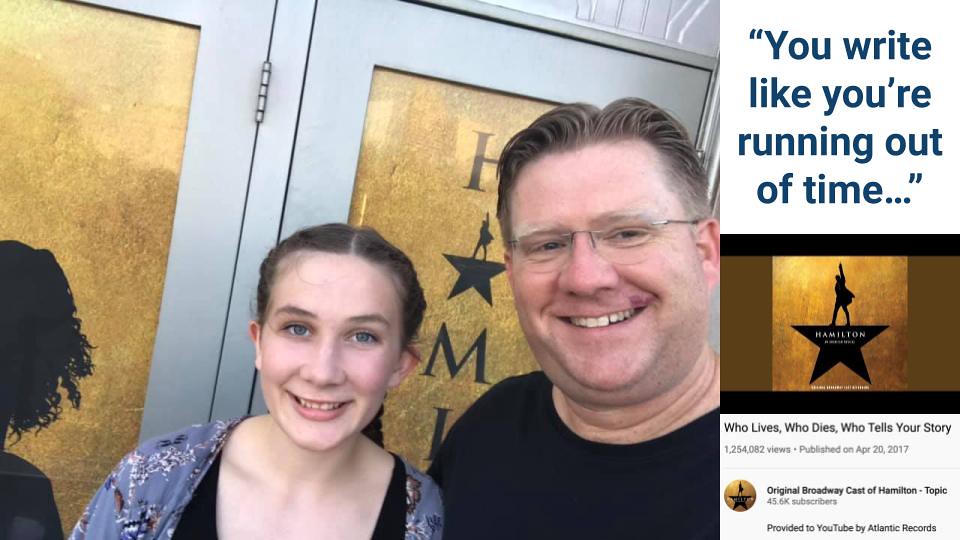In 2023, the digital software, tools, and connective infrastructure at our disposal have opened exciting avenues for documenting and sharing live events. This process, which I’ve called “Storychasing,” is the focus of today’s post. Prompted by a Facebook “friend of a friend” planning a school trip to Europe this summer, I intend to share some insights, advice, and tools on how to document and share these experiences online, in real-time.
As I’m primarily dictating this post on my iPhone today, the hyperlink formatting and shared media won’t be as comprehensive as they could be. I plan to update this post’s formatting later and create a new page on the Storychasers website dedicated to live events. In the meantime, please visit the “Storychasers Examples” page for a look at post-produced digital stories.
Live vs. Asynchronous Media
While it’s simpler than ever to broadcast live from a location with strong internet connectivity, creating high-quality, long-form content in a live setting can be challenging. As a co-creator of a weekly hour-long webcast and podcast, I’ve experienced firsthand the level of planning each episode demands. The convenience of creating these episodes from our homes, aided by access to our notes in Google Docs, undoubtedly facilitates our content creation process.
However, broadcasting from a live location can also be highly valuable. This format allows for immediate sharing of experiences, utilizing the human brain’s capacity to recognize and share details right after an experience. Both post-produced media products and live events have their respective places, challenges, and limitations.
Media Production and Social Media Platforms
Media production can be complex. Simplifying it can be even more challenging. Platforms like Facebook, Instagram, and YouTube have made this process easier by supporting live and archived streaming of events, while also notifying followers of a live broadcast.
Previously, live streaming events required setting up blogs and using tools like Ustream. Now, with platforms like Facebook notifying followers of live events directly in their news feeds, this process is much simpler. However, the choice of a specific social media platform inevitably excludes those without active accounts on that platform.
One way to circumvent this issue is by using a streaming platform capable of posting simultaneous streams on more than one platform. For our Edtech Situation Room show, we use StreamYard, which lets us simultaneously broadcast live on both YouTube and Facebook. StreamYard also allows streaming from mobile devices like an iPhone, accommodating those who refuse to use Facebook by cross-posting to YouTube.
Recommendations for Live Event Sharing: Summer 2023 Trip to Europe
1. Set up a Facebook page for your trip and invite others to follow it.
2. Plan to share a mix of both live events and edited media videos.
3. Schedule live events from different locations, work out the timezone conversions, and use an email list to notify interested parties in advance of your broadcasts.
4. Check the cellular network connectivity at your broadcast locations. At a minimum, 4G connectivity should be available, though 5G is preferable. If connectivity is poor, consider recording offline and publishing later.
5. Survey your potential audience to ascertain how many already have a Facebook account. If a large number do not, consider using a tool like StreamYard to cross-post to both YouTube and Facebook.
6. Practice creating asynchronous, edited media in advance. Simple audio interview recordings can be incredibly valuable, either shared as is or used later in post-production to create narrated slideshows or more elaborate videos.
7. Two software programs I recommend using and practicing with are Adobe Spark Video and iMovie. Adobe Spark Video allows for the quick creation of narrated slideshows with photos, offering an efficient and powerful way to create short videos. iMovie is more powerful and flexible but also slightly more complicated. Both are excellent tools for Storychasing using an iPhone or iPad.
These are just a few suggestions to help you effectively share live events during your summer 2023 trip to Europe. Remember that each platform and method has its advantages and limitations, so it’s essential to find the right balance that best serves your needs and audience.
AI usage disclosure: This blog post was polished and edited with help from ChatGPT 4.0.

